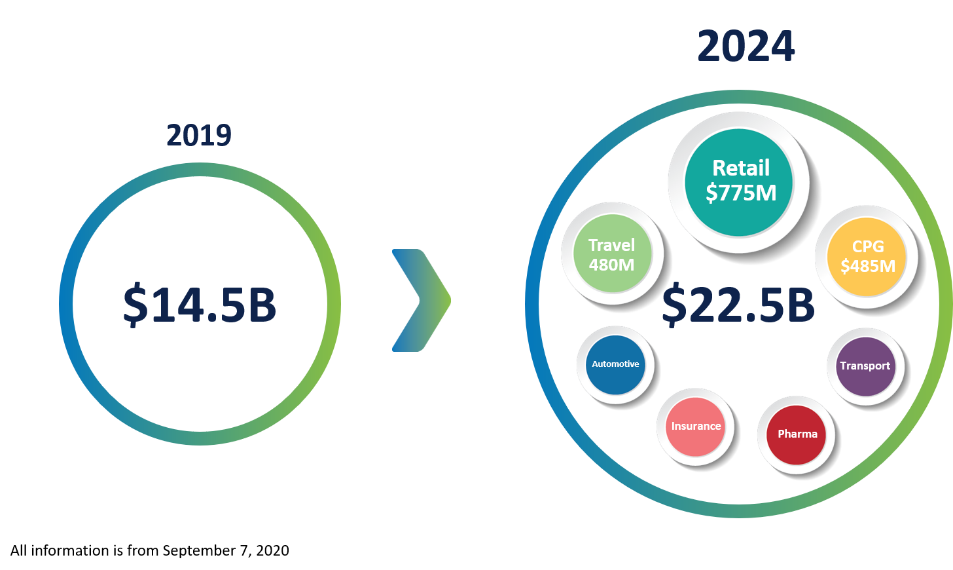The market for revenue management, of which dynamic pricing is a part of, is forecast to grow over the coming years. According to market research firm Report Linker, the market is expected to increase by 55% between 2019-2024, growing into a $22.4B market. Retail owns a significant portion of that growth, at $775M. This is certainly aided by more offline retailers moving online in response to COVID-19, but we expect that brick & mortar retailers that maintain an offline only presence will adopt dynamic pricing as well, to better compete with their online rivals.
Dynamic pricing is on the cusp of wide-scale adoption across all types of retailers. Once a plaything of airlines and the travel industry, dynamic pricing has gone mainstream. A Bain & Company global survey of 1,700 business leaders revealed that 85% of company management believe they need to make better pricing decisions. However, only 15% of companies have effective tools and dashboards in place to monitor prices.
Why the Move to AI-Based Dynamic Pricing?
Retailers are embracing the artificial intelligence pricing guidance systems for one simple reason; it delivers increased revenues and profits. McKinsey & Company recently published research claiming that AI-based pricing and promotion can deliver up to $500B in global market value. Our own experience at Quicklizard has shown that businesses that adopt dynamic pricing experience up to 30% increases in sales, and a 10% increase in profits.
Boston Consulting Group (BCG), a leader in corporate transformation, recently published a blog claiming that pricing optimization techniques could spur up to 5% growth in as little as three months. Automating pricing rules was a key element in generating this growth.
Clearly, AI creates opportunities for profits, but the ways in which it guides decision makers is eye opening.
Transactional Data
AI tools are capable of parsing through mountains of data, uncovering insights and anomalies that would otherwise go unnoticed. This benefits retailers in several ways.
First, it can help retailers recognize the discounts and offers that are overall unproductive. Even promotions that seemed productive are analyzed and can show whether promotions truly delivered sales or merely cannibalized existing customers and eroded profits.
As a result, retailers can cut out revenue leakage from expensive, unproductive campaigns and target their resources towards those promotions that deliver real value.
Secondly, AI can help retailers identify patterns in pricing, volume sales, and other transactional data. By unlocking these insights with an AI-based approach, retailers can optimize their prices based on the way products are actually purchased.
User Behavior
Propensity models use data to predict behavior. Through these models, retailers forecast the likelihood that web visitors, leads, and customers will react to different types of offerings. For example, propensity models can guide retailers as to whether an offer will drive for a specific customer demographic or lead that demographic to search elsewhere for their products.
These models are built using AI-based tools, and can guide retailers on bundles to create, email pricing campaigns, and upsell or cross sell opportunities. AI-based propensity models guide retailers in predicting customer behavior, and how past engagements will lead to future purchases.
AI also guides pricing managers in recognizing how much a customer is willing to pay. It helps to identify the right pricing decision based on the cost of the product and opens their eyes to blind spots in the pricing and discount decision making.
As a result, pricing managers have more accurate pricing guidance at their disposal. Dynamic pricing coupled with AI-enhanced guidance can lead to more effective use of pricing discounts.
The Time is Now
The use of artificial intelligence is proliferating throughout the world of retail. The guidance it provides and the opportunities it identifies are invaluable to retailers and pricing managers who previously relied on their gut feeling, Excel-based formulas, or the way they’ve always done things.
It is essential to any retailer who expects to compete in today’s marketplace. After all, in the time spent reading this article, Amazon has probably changed it prices to compete with you.
This blog was written and contributed by:
Pini Mandel
CEO and Co-Founder





